Popular varieties of Serbian spruce
Today, there are a large number of varieties of Serbian spruce. However, the greatest demand and popularity in the field of landscape design and garden cultivation have acquired: dwarf, high-mountain spear-shaped and wide-pin varieties. Some of them are described below.
Aurea
Picea Omorika Aurea is a coniferous perennial with a narrow-conical crown, up to 90 cm in diameter, yellow-green needles, the color of which becomes blue-green by autumn. The tree is small, by the age of 10 it grows up to 2.5 m. The maximum possible height of an adult specimen is 9 m. Aurea can boast of high frost resistance, down to -29 ° C, non-capriciousness and undemanding to soils.
Prefers to grow in well-lit areas, but can tolerate light partial shade.
Pendula
Spruce Pendula (Omorika Pendula) is distinguished by gracefully hanging elastic, flexible branches and dense, heavily pubescent, shiny needles of dark green color. The tree belongs to the category of medium-sized, has a compact size and an unusual narrow-weeping crown shape, up to 1.5 m in diameter. An adult plant grows up to 10 m.
We recommend that you learn how to properly transplant a spruce from the forest to the site.
Pendula is characterized by high resistance to frost, shade tolerance, resistance to many ailments and pests. Thanks to the hanging crown, the culture is often used to create original and creative compositions and mixborders near water bodies, stones.
Looks spectacular in specimen and group plantings.
Karelian
Serbian spruce Karel (Picea Omorika Karel) is considered one of the most popular and valuable varieties. The dwarf forms of the described spruce reach a height of no more than 60 cm, which allows the plant to be used in landscape design. The crown, slightly more than 1 m in diameter, consists of highly branching shoots, which are placed at different angles from the central conductor. The upper branches are usually located upward, the lower ones either downward or in a horizontal direction.
Karel does not grow very quickly, annually adding 7–10 cm in height. Spruce is characterized by excellent frost resistance, strong immunity, but for full growth and maintenance of decorativeness it needs nutritious, breathable soils.
Does not tolerate compacted soil and stagnant moisture, which have a detrimental effect on the condition of the root system.
Nana
The spectacular dwarf spruce Nana (Omorika Nana) has a slow growth rate and by the age of 10 it grows up to 120 cm. An adult plant can reach 4–5 m. Every year the growth of the crop increases by 7–10 cm. Nana has a wide-conical, very dense crown formed by short, hard shoots. The needles of the tree are not thick, on the upper side - yellow-green, on the bottom - bluish-gray with two stripes of white color.
Due to its compact size, Nana looks great on personal plots or in private gardens, it is used to create compositions paired with heather.
Wodan
The dwarf hybrid Wodan is characterized by slow growth rates and at the age of 30 reaches a height of 60 cm. The peculiarity of the variety is the original asymmetrical, pyramidal shape of the crown. The needles of the culture are collected in small bunches, slightly curved, have a bluish-green color, and are silvery on the underside. Wodan is one of the most decorative varieties. It is frost-resistant, gas- and smoke-resistant, shade-tolerant, not capricious to the composition of the soil and climatic conditions.
Looks great alone or in a group with other conifers in parks or gardens.
Popular types
Now let's take a closer look at the most popular varieties of spirea.
Slate
Spiraea Prunifolia is a very attractive spring flowering cultivar. Its white double flowers with yellow cores are collected in globular inflorescences of 3-6 pieces each. The shrub grows up to 2 meters high. The branches are thin, bend well. Leaflets are ovate, oblong, herbaceous green, slightly pubescent from the inside; in autumn, they are painted in a red or reddish-brown hue.
Willow
Spiraea Salicifolia is a flowering shrub up to 2 meters in height. It is called willow leaf for the shape of the leaf: pointed, elongated (up to 10 cm). The branches of Spiraea Salicifolia grow upward.
This variety is especially appreciated for its beautiful flowering: small flowers are collected in paniculate cone-shaped inflorescences and amaze with a variety of shades (snow-white, bright pink, lilac, wine-red).
Three-bladed
Spiraea Trilobata L. can reach 1.2 meters in height. Has a spherical or domed compact crown, very thickened. There are many branches, they grow up and to the sides. The leaves are small (from 1.5 to 3 cm), slightly resembling in shape a three- or five-fingered rounded “foot” with pointed edges of “fingers”. When they bloom, they have a yellow tint, gradually turning into grassy green on top and bluish green “from the inside out”; turn golden in autumn.
Average
Spiraea Media Schmidt can reach up to 2 meters in height. Has a rounded crown, branches grow upward. Leaflets are 2.5–5 cm long, ellipsoid or ovate, elongated. They have 3-5 denticles along the edge, the color is bright green, gray pubescence is present below.
The flowers are small (8 mm), snow-white or pale yellow, collected in dense hemispherical inflorescences, located at the top of the shoot and directed upwards. The diameter of each inflorescence is 4 cm.
White
Spiraea alba is a two-meter flowering shrub with the same crown diameter. The branches grow upward, the leaves are lanceolate, with sharp tips and jagged edges. In length they reach 7 cm, in width - 2. The flowers are snow-white, with a yellowish center, very small, collected in fluffy paniculate inflorescences in the shape of a pyramid. The length of each "panicle" reaches 15 cm.
Gorodchaty
Spiraea Crenata has a height of 1–2 m, a crown diameter of 1.6 m. The leaves grow alternately, have an ovoid shape, grow up to 3.5 cm in length, and 1 in width. The leaves are slightly serrated along the edge. Painted in a dark green tone.
The flowers are small (5–8 mm), obovate, white, with light yellow centers. Collected in dense hemispherical inflorescences, each of which contains up to 12 flowers.
Animal-leaved
Spiraea Hypericifolia L. is a low shrub (0.5–1.6 m) with a thickened spreading crown. The branches grow sprawling, slightly bent in an arc downward. Leaflets are small (2.5–3 cm), ellipsoid or obovate. Their color is gray-green, on the back there is a slight pubescence.
Japanese
Spiraea Japonica has many different varieties, but we'll talk about them below. Now let's describe the classic Japanese variety.
The height of the bush is 1.2–2 meters, the diameter of the crown is identical to it. Stems are erect. Leaves are oval-shaped, can reach 2.5–7.5 cm in length. Grow alternately.
The flowers are pink, collected in dense inflorescences located at the ends of the shoots.
Berezolistnaya
Spiraea Betulifolia is a low-growing bush (0.6-1 m) with a crown diameter of up to a meter. It has a spherical shape, looks very neat and compact.
Shoots of birch spirea grow upward, thickened. The leaves slightly resemble birch leaves, but without a pointed tip (in spirea they are more rounded). The edges are slightly serrated. The length of the leaf is about 5 cm.
Other
We continue our acquaintance with the popular varieties of spirea.
Kalinolistny spirea. In fact, this is the erroneous name for the plant Phylocarpus Opulifolius or the viburnum. Although they are representatives of the same family (Rosaceae), they are different shrubs.But we will still talk about the vesicle, since it is very similar to the spirea externally. The plant is characterized by a dense spherical crown formed by sprawling shoots.
Landing
When choosing a seedling, opt for specimens with a closed root system. They can be purchased in containers, which is very convenient and allows you to safely take the tree home. Make sure the crown of the tree is intact. Fertile, acidic soil is best suited for this spruce. The ideal soil will be moderately moist loam or sandy loam, which should not be located in the groundwater zone.
The soil within the radius of the tree's growth does not need to be compacted. So that she does not trample, plant a tree away from the paths. It will feel comfortable if the soil is loosened from time to time. The main thing is to carry out this procedure carefully, without touching the roots of the tree, because they are quite close to the surface of the earth. Planting includes several stages.
- To make the tree comfortable, and it quickly takes root, prepare a hole for it 1.5–2 times the size of the existing coma. The depth of the hole should be 80 cm, plus leave 20 cm for the drainage.
- Pour a bucket of water into the hole. Deepen the tree so that the neck is at ground level. After sprinkling the trunk with earth, it needs to be watered and fertilized again. If at first one bucket of water is enough for the Christmas tree, then as it grows up, the amount of watering should increase. If its growth has already exceeded the meter mark, then you can take two buckets for watering.
- With age, the root system of this hardly grows extensively - underground they can occupy up to 3 meters of area.
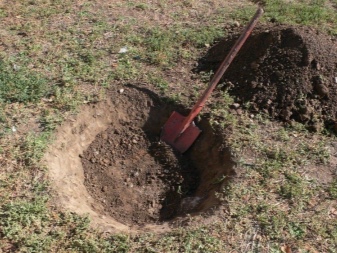
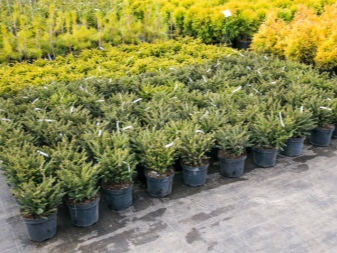
Description
In total, up to 30 varieties of Serbian spruce can be found in nature (another name for the species is "omorika"). It differs in the size and shape of the crown, as well as in the color of the needles. Serbian spruce belongs to a rare species of the Pine family, which is relatively widespread in the cultivation of spruces. When choosing a Serbian spruce for growing on your site, you should focus on its botanical description in order to follow the general design of the area.
An evergreen tree, on average, reaches a height of 20 m to 35 m, with a trunk diameter of up to 1 m. A characteristic feature of such spruces is their narrow crown and raised short branches. Spruce needles can be up to 20 cm long. Their color is interesting: on top the needles have a blue-green tint, and on the bottom - silvery or blue-white. On the trees, cones ripen 4-7 cm long, dark brown in color.

Serbian spruce plays an important role in gardening, as it is able to adapt to different soils and decorate any landscape around. In North America and Europe, trees have long been valued for their hardiness, growth rate and quality wood. In forestry, the cultivation of Christmas trees is given special importance on the eve of the New Year holidays.
Omorica conifers have many advantages. Ate long-livers in the wild can live up to 300 years. For 30 years, tall varieties are able to reach 15 m, adding 50 cm in height annually. Beautiful spruce trees are distinguished by their grace and harmony at any age. The cones, which appear on the lush crown at the twelfth year of life, give even greater decorativeness to the Christmas trees. They have a dark brown or purple-violet hue and do not fall off from strong winds.
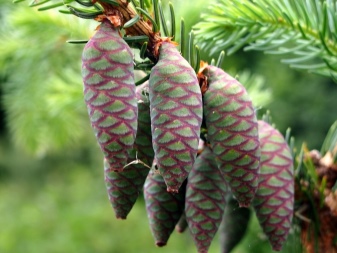
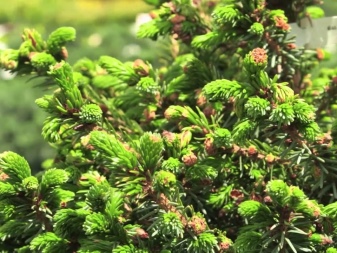
The popularity of the Serbian spruce (Picea omorik) among gardeners and landscape designers is explained not only by its decorativeness, but also by its undemanding care. Landings look spectacular in a wide variety of compositions. Omorica is often included in the design of hedges.
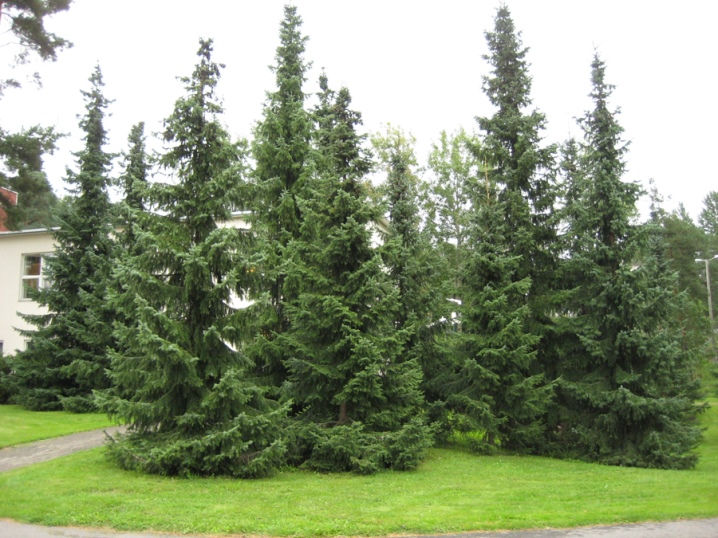
Description of the variety "Brilliant"
What else can they call?
Ochitnik prominent "Brilliant" is a more accurate and narrow name from a large genus of sedums. At the end of the 20th century. Japanese scientist Hideaki Okhba identified a separate genus - sedum (Hylotelephium), which includes up to 30 subspecies. Among them - the most widespread and popular species - the cleaver prominent Brilliant, bred in 1913.
Subsequently, it was this variety that became the basis for the selection of hybrid varieties of the prominent sedum. Sedum prominent "Brilliant" (Sedum spectabile "Brilliant") is the Latin name for the same species. But in scientific terminology, it is the first name that is used - the Prominent "Brilliant" (Hylotelephium Spectabile "Brilliant").
Sedum - literally "sit, sit down". The leaves have no petioles, sit tightly on the stems, sessile. There is also a version that sedum means "calm down, pacify". This variety is considered a medicinal plant with analgesic, sedative properties.
Florists call this type of sedum remarkable for its decorative effect and the ability to bloom until the very frost. In everyday life, the plant is called hernial herb, febrile herb.
What does this plant look like?
Ochitnik prominent Brilliant grows as a lush, dense bush with a diameter of up to 50 - 60 cm. The height of an adult bush is 30 - 40 cm. The shoots are round, straight, and numerous. An adult bush gives up to 15 - 18 stems. Stems are dense, thick, bright green. In winter, the stems most often die off; in the spring, young shoots grow from the rhizome.
Leaves are elliptical, oblong, compacted in structure, juicy. The tops of the leaves are serrated. The leaf plate is light green with a bluish bloom, without pubescence.
Flowering is dense, abundant, begins in early August. The plant blooms for more than a month, until the first frost. According to the color of the flowers, the variety belongs to the pink carmine varieties. Inflorescences form a hemisphere, corymbose, grow in diameter up to 12 - 15 cm. The flowers themselves are small, bright pink, there are sub-varieties with a raspberry tint. The flowers have 4 - 5 pointed petals. Stamens are small, up to 10 pcs.
Fruits are small, dusty, ripen in capsules. In temperate regions, they cannot fully ripen. Tuberous root, dense.
Is it easy to grow and how long does it live?
Ochitnik prominent "Brilliant" is a late-flowering variety. Its peculiarity is that the bushes are not afraid of the cold, they continue to bloom until late autumn.
In summer, the plant is not afraid of heat; many reserves of liquid and nutrients are stored in the leaves and stems. The variety is undemanding to the composition of the soil.
Without transplanting, the bushes develop well up to 4 - 5 years. After the bushes require updating. To do this, it is necessary to plant young seedlings, divide adult bushes into parts, remove old shoots and transplant. With proper care and regular rejuvenation of bushes, lawns, flower beds and flower beds will look spectacular for 10 years.
It is not recommended to plant these plants near large bushes and fruit trees. Plants grow poorly in the shade. Sedum prominent "Diamond" ideally masks all the irregularities of the garden.
Sedum is a ground cover plant with a huge number of varieties. One of its properties is its extraordinary durability. Therefore, it is used for growing both in the garden and at home. If you are interested in sedum, we suggest learning about species such as Morgana, False, Corrosive, Three-leafed (Purple), Purple carpet, Frosty Morne and Mediovariegatum, Ordinary, Burrito and Matrona.


